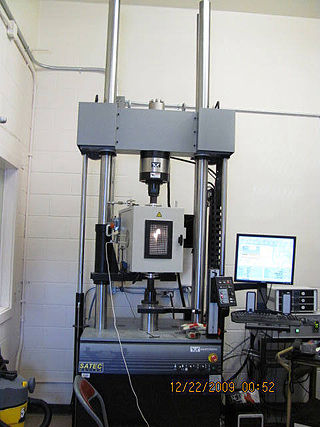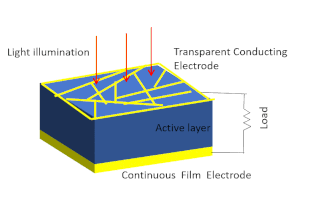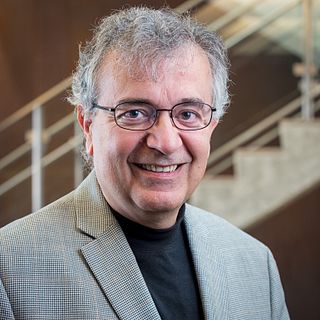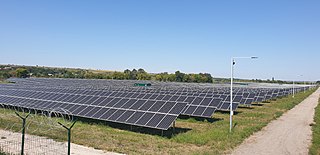
A perovskite is any material with a crystal structure following the formula ABX3, which was first discovered as the mineral called perovskite, which consists of calcium titanium oxide (CaTiO3). The mineral was first discovered in the Ural mountains of Russia by Gustav Rose in 1839 and named after Russian mineralogist L. A. Perovski (1792–1856). 'A' and 'B' are two positively charged ions (i.e. cations), often of very different sizes, and X is a negatively charged ion (an anion, frequently oxide) that bonds to both cations. The 'A' atoms are generally larger than the 'B' atoms. The ideal cubic structure has the B cation in 6-fold coordination, surrounded by an octahedron of anions, and the A cation in 12-fold cuboctahedral coordination. Additional perovskite forms may exist where either/both the A and B sites have a configuration of A1x-1A2x and/or B1y-1B2y and the X may deviate from the ideal coordination configuration as ions within the A and B sites undergo changes in their oxidation states.

Photovoltaics (PV) is the conversion of light into electricity using semiconducting materials that exhibit the photovoltaic effect, a phenomenon studied in physics, photochemistry, and electrochemistry. The photovoltaic effect is commercially used for electricity generation and as photosensors.
In the 19th century, it was observed that the sunlight striking certain materials generates detectable electric current – the photoelectric effect. This discovery laid the foundation for solar cells. Solar cells have gone on to be used in many applications. They have historically been used in situations where electrical power from the grid was unavailable.

A solar cell, or photovoltaic cell, is an electronic device that converts the energy of light directly into electricity by the photovoltaic effect, which is a physical phenomenon. It is a form of photoelectric cell, defined as a device whose electrical characteristics, such as current, voltage, or resistance, vary when exposed to light. Individual solar cell devices are often the electrical building blocks of photovoltaic modules, known colloquially as solar panels. The common single-junction silicon solar cell can produce a maximum open-circuit voltage of approximately 0.5 to 0.6 volts.

Building science is the science and technology-driven collection of knowledge in order to provide better indoor environmental quality (IEQ), energy-efficient built environments, and occupant comfort and satisfaction. Building physics, architectural science, and applied physics are terms used for the knowledge domain that overlaps with building science. In building science, the methods used in natural and hard sciences are widely applied, which may include controlled and quasi-experiments, randomized control, physical measurements, remote sensing, and simulations. On the other hand, methods from social and soft sciences, such as case study, interviews & focus group, observational method, surveys, and experience sampling, are also widely used in building science to understand occupant satisfaction, comfort, and experiences by acquiring qualitative data. One of the recent trends in building science is a combination of the two different methods. For instance, it is widely known that occupants’ thermal sensation and comfort may vary depending on their sex, age, emotion, experiences, etc. even in the same indoor environment. Despite the advancement in data extraction and collection technology in building science, objective measurements alone can hardly represent occupants' state of mind such as comfort and preference. Therefore, researchers are trying to measure both physical contexts and understand human responses to figure out complex interrelationships.

A solar panel is a device that converts sunlight into electricity by using photovoltaic (PV) cells. PV cells are made of materials that generate electrons when exposed to light. The electrons flow through a circuit and produce direct current (DC) electricity, which can be used to power various devices or be stored in batteries. Solar panels are also known as solar cell panels, solar electric panels, or PV modules.
GreatCell Solar Limited previously known as Dyesol, was a solar energy company developing perovskite solar cell 3rd generation thin-film solar cell technologies and materials. The company was previously focused on developing dye-sensitized solar cell technology but then focused on perovskite solar cells, and assisted manufacturing partners to produce perovskite photovoltaic modules. The company was based in Queanbeyan, Australia and opened its manufacturing and research facilities in October 2008. It expanded to several locations around the world, including the UK and Switzerland, and established joint ventures in South Korea and Singapore.

Thin-film solar cells are made by depositing one or more thin layers of photovoltaic material onto a substrate, such as glass, plastic or metal. Thin-film solar cells are typically a few nanometers (nm) to a few microns (µm) thick–much thinner than the wafers used in conventional crystalline silicon (c-Si) based solar cells, which can be up to 200 µm thick. Thin-film solar cells are commercially used in several technologies, including cadmium telluride (CdTe), copper indium gallium diselenide (CIGS), and amorphous thin-film silicon.

Solar-cell efficiency refers to the portion of energy in the form of sunlight that can be converted via photovoltaics into electricity by the solar cell.
Inkjet solar cells are solar cells manufactured by low-cost, high tech methods that use an inkjet printer to lay down the semiconductor material and the electrodes onto a solar cell substrate.

A perovskite solar cell (PSC) is a type of solar cell that includes a perovskite-structured compound, most commonly a hybrid organic–inorganic lead or tin halide-based material as the light-harvesting active layer. Perovskite materials, such as methylammonium lead halides and all-inorganic caesium lead halide, are cheap to produce and simple to manufacture.

Mercouri Kanatzidis is a Charles E. and Emma H. Morrison Professor of chemistry and professor of materials science and engineering at Northwestern University and Senior Scientist at Argonne National Laboratory.
Light soaking refers to the change in power output of solar cells which can be measured after illumination. This can either be an increase or decrease, depending on the type of solar cell. The cause of this effect and the consequences on efficiency varies per type of solar cell. Light soaking can generally cause either metastable electrical or structural effects. Electrical effects can vary the efficiency depending on illumination, electrical bias and temperature, where structural effects actually changes the structure of the material and performance is often permanently altered.

Multiple different photovoltaic module analysis techniques are available and necessary for the inspection of photovoltaic (PV) modules, the detection of occurring degradation and the analysis of cell properties.

Mohammad Khaja Nazeeruddin is an Indian-Swiss chemist and materials scientist who conducts research on Perovskite solar cells, dye-sensitized solar cells, and light-emitting diodes. He is a professor at EPFL and the director of the Laboratory for Molecular Engineering of Functional Materials at School of Basic Sciences.
Giulia Grancini is an Italian physicist who is a Professor of Chemistry at the University of Pavia. Her work considers new materials for photovoltaic devices, including perovskites and polymer-based materials. In 2020, Grancini was named the Royal Society of Chemistry Journal of Materials Chemistry Lecturer.
Anita Ho-Baillie is an Australian scientist who is the John Hooke Chair of Nanoscience at the University of Sydney. Her research considers the development of durable perovskite solar cells and their integration into different applications. She was named as one of the Web of Science's most highly cited researchers in 2019–2022.

Ana Flávia Nogueira is a Brazilian chemist who is a professor at the State University of Campinas (Unicamp) since 2004. Her research considers nanostructured materials for solar applications. She was elected to the Brazilian Academy of Science in 2022.

Emily Warren is an American chemical engineer who is a staff scientist at the National Renewable Energy Laboratory. Her research considers high efficiency crystalline photovoltaics.
Joseph J. Berry is an American scientist who is Principal Scientist at National Renewable Energy Laboratory. He leads the United States Department of Energy Solar Energy Technology Office program on perovskite solar cells, and is Director of the U.S. Manufacturing of Advance Perovskites consortium.













